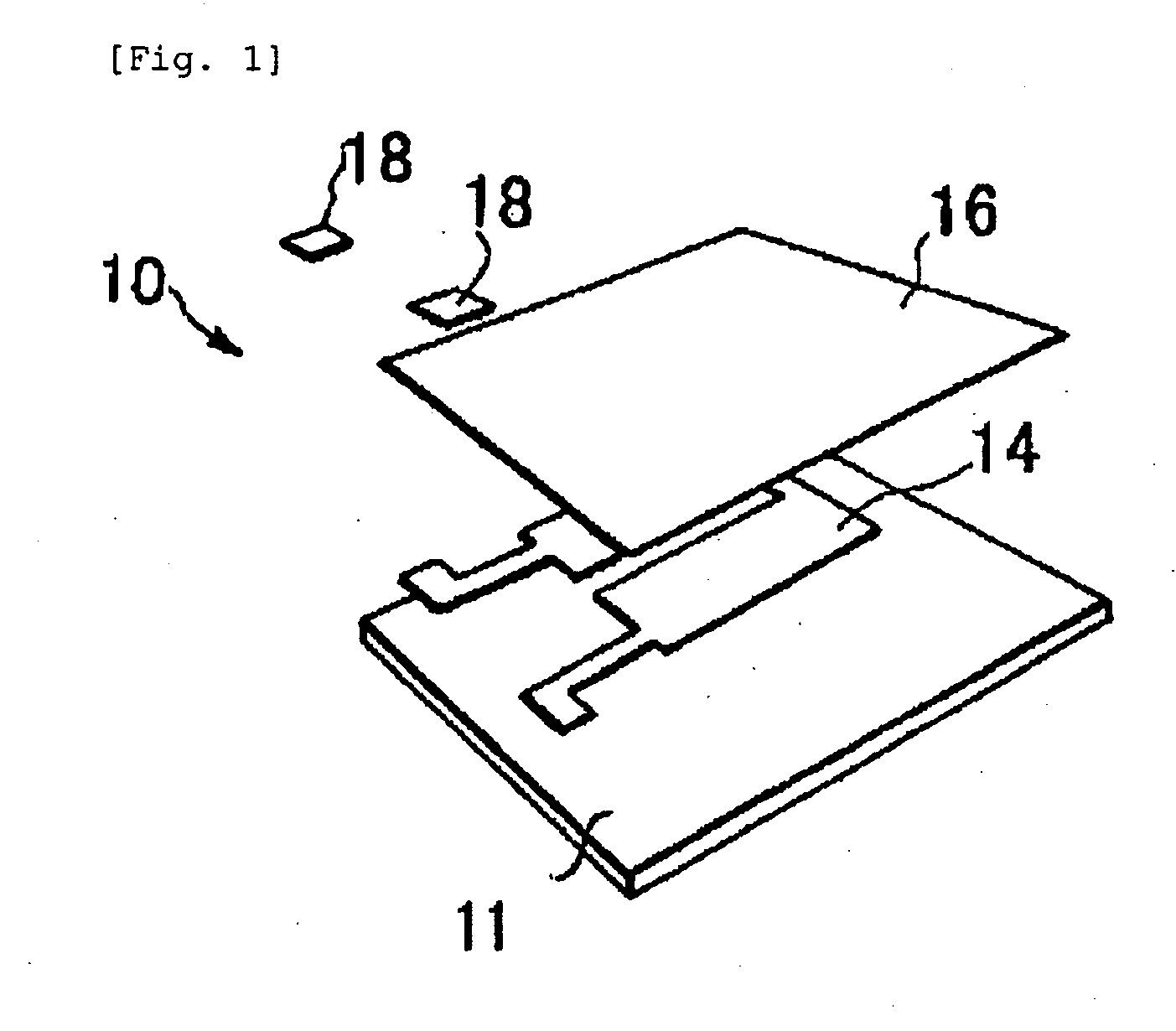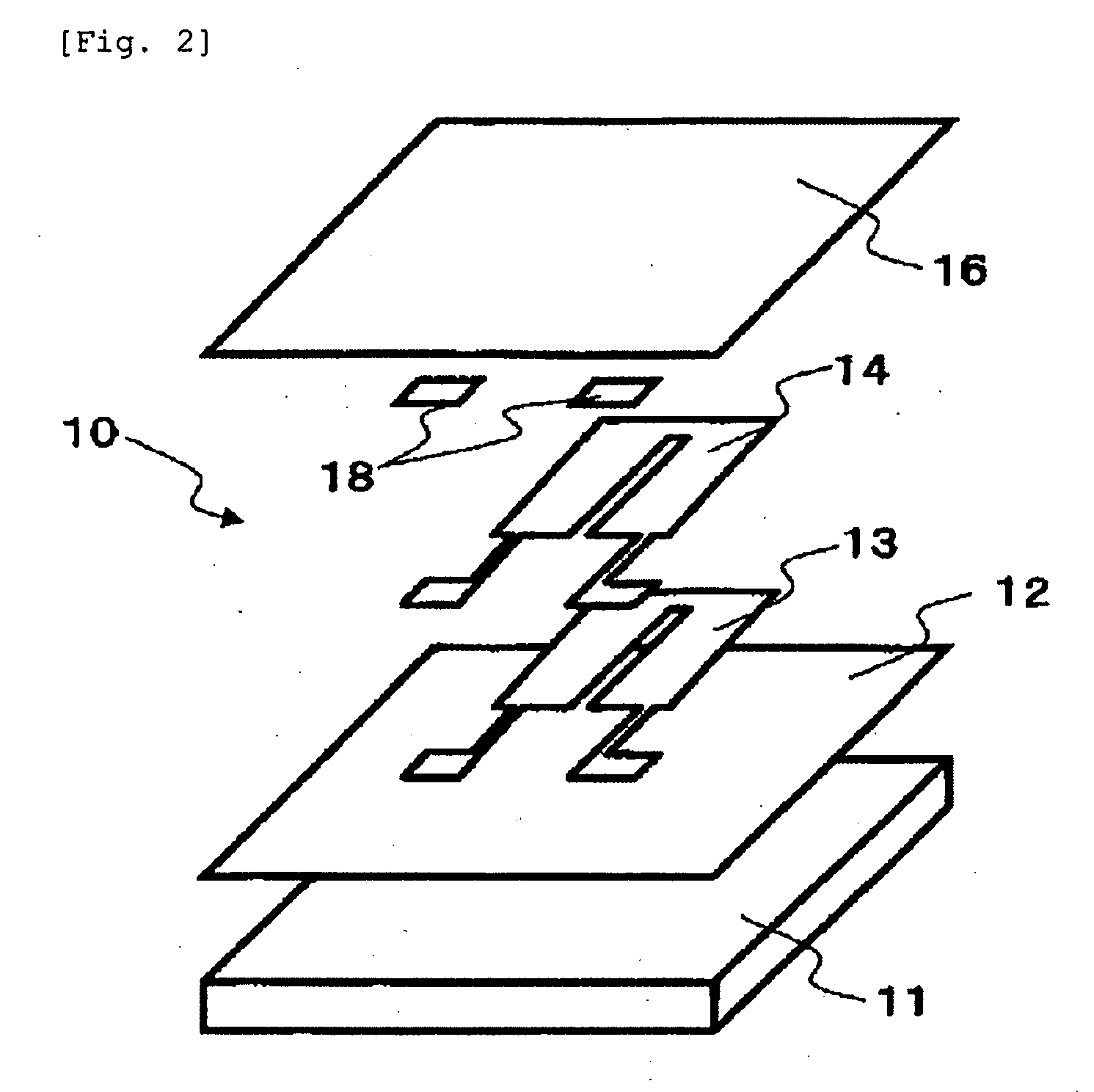Laminates, Thin-Film Sensors, Thin-Film Sensor Modules, and Methods for Producing the Thin-Film Sensors
a technology of thin film and sensor, applied in the direction of heat measurement, paper/cardboard containers, instruments, etc., can solve the problems of increasing costs, affecting the quality of thin film sensors, so as to improve sensitivity, increase the mean grain diameter of crystal grains, and increase the temperature coefficient of resistance
- Summary
- Abstract
- Description
- Claims
- Application Information
AI Technical Summary
Benefits of technology
Problems solved by technology
Method used
Image
Examples
example 1
[0175]A SiO2 layer was formed on an aluminum substrate by the similar operation to that of Example 1. Thereafter, a titanium layer having a film thickness of 30 nm was formed in the same manner as Comparative Example 1 except that the conditions of forming a titanium layer were changed to the following conditions.
[0176]Apparatus: Magnetron sputtering apparatus
[0177]Ultimate vacuum: Less than 2.0×10−5 Pa
[0178]Film-forming pressure: 0.03 Pa
[0179]Gas flow rate: 20 SCCM [Ar:O2=10:0 (volume ratio at standard state)]
[0180]Film-forming electric power: 50 W (DC)
[0181]Film-forming temperature: 400° C.
[0182]Next, a temperature-sensitive resistor having a film thickness of 400 nm was formed on the titanium layer thus formed by performing sputtering using platinum (purity: 99.9%) as a target under the following conditions.
[0183]Apparatus: Magnetron sputtering apparatus
[0184]Ultimate vacuum: Less than 2.0×10−5 Pa
[0185]Film-forming pressure: 0.03 Pa
[0186]Gas flow rate: 20 SCCM [Ar:O2=10:0 (volume...
example 2
[0192]A thin-film sensor 2 (a temperature sensor 2) was obtained by heat treating the laminate 1 at 1,000° C. for 4 hours under an atmospheric atmosphere. The thin-film sensor 2 was tested for temperature coefficient of resistance (TCR), crystal grain diameters, orientation properties and adhesion as described below. The results are shown in Table 1. In addition, the measurement of the pole figure for (111) planes was made. The result is shown in FIG. 7.
example 3
[0193]A thin-film sensor 3 (a temperature sensor 3) was obtained by heat treating the laminate 1 at 900° C. for 4 hours under an atmospheric atmosphere (oxygen partial pressure: 20%). The thin-film sensor 3 was tested for temperature coefficient of resistance (TCR), crystal grain diameters, orientation properties and adhesion as described below. The results are shown in Table 1.
PUM
| Property | Measurement | Unit |
|---|---|---|
| Temperature | aaaaa | aaaaa |
| Fraction | aaaaa | aaaaa |
| Fraction | aaaaa | aaaaa |
Abstract
Description
Claims
Application Information
 Login to View More
Login to View More - R&D
- Intellectual Property
- Life Sciences
- Materials
- Tech Scout
- Unparalleled Data Quality
- Higher Quality Content
- 60% Fewer Hallucinations
Browse by: Latest US Patents, China's latest patents, Technical Efficacy Thesaurus, Application Domain, Technology Topic, Popular Technical Reports.
© 2025 PatSnap. All rights reserved.Legal|Privacy policy|Modern Slavery Act Transparency Statement|Sitemap|About US| Contact US: help@patsnap.com



